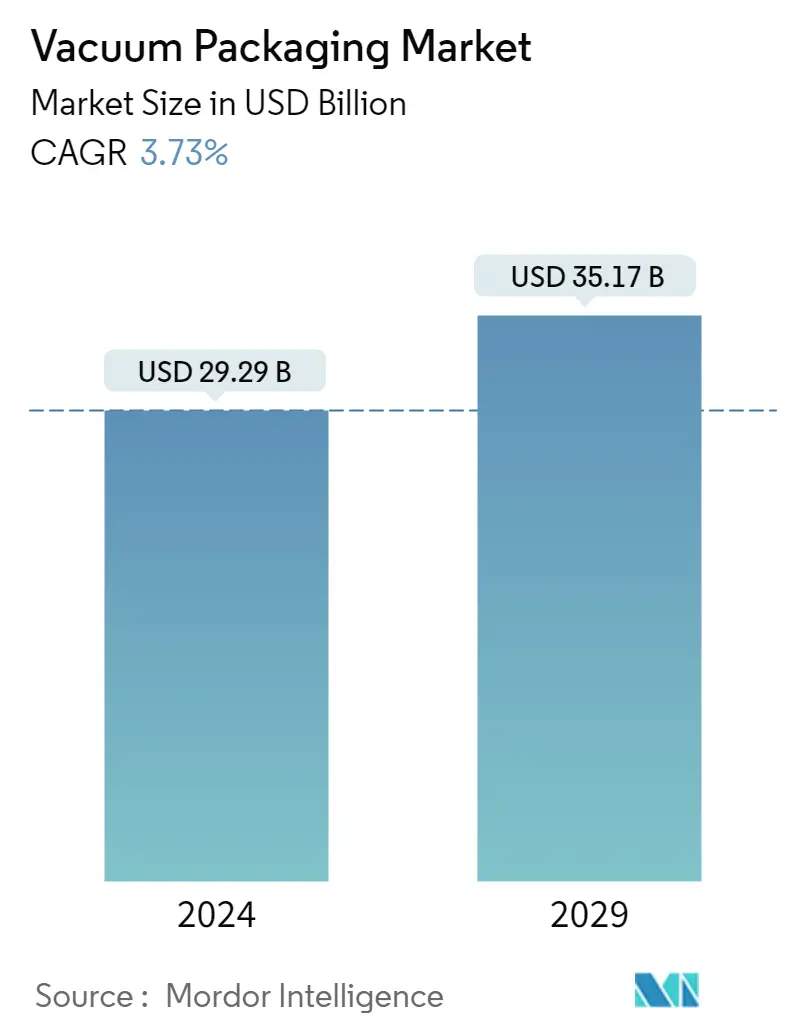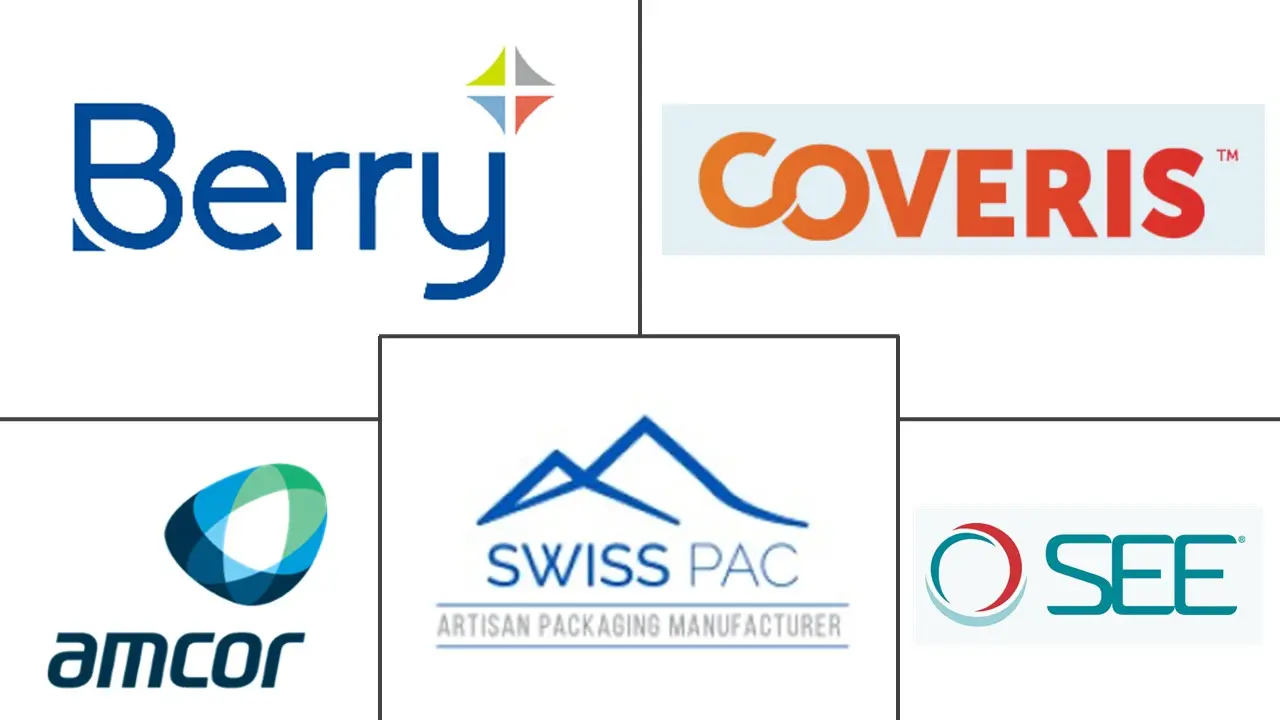Market Size of Vacuum Packaging Industry

| Study Period | 2019 - 2029 |
| Market Size (2024) | USD 29.29 Billion |
| Market Size (2029) | USD 35.17 Billion |
| CAGR (2024 - 2029) | 3.73 % |
| Fastest Growing Market | Asia Pacific |
| Largest Market | North America |
Major Players
*Disclaimer: Major Players sorted in no particular order |
Need a report that reflects how COVID-19 has impacted this market and its growth?
Vacuum Packaging Market Analysis
The Vacuum Packaging Market size is estimated at USD 29.29 billion in 2024, and is expected to reach USD 35.17 billion by 2029, growing at a CAGR of 3.73% during the forecast period (2024-2029).
Vacuum packing is a technique that eliminates air from a product before sealing it, creating a partial vacuum inside the packaging. This procedure contributes to the extension of the shelf life of numerous products.
- In recent years, the vacuum packing industry has grown steadily. This is due to the rising demand for convenience foods, increased awareness about food waste reduction, and the necessity for effective packaging solutions to extend product shelf life.
- The growing demand for packaged food and increasing awareness of food safety are major drivers of the vacuum packaging market. Consumers are becoming more aware of the importance of food safety and hygiene. By reducing the danger of contamination, vacuum packing is important in preserving food safety. It assists in preserving food freshness and quality by minimizing the possibility of bacterial development and deterioration.
- The increasing demand for hygienic and convenient packaging is a significant driver of the vacuum packaging market. Vacuum packing helps preserve product hygiene and integrity by providing a sealed environment. By eliminating air from the container, the product is less exposed to external pollutants such as germs, mold, and moisture. As a result, vacuum-sealed packaging is ideal for perishable commodities such as food, medicines, and medical devices, where cleanliness is critical.
- The high cost of the vacuum packaging process can significantly restrain the vacuum packaging market. Vacuum packing necessitates using specialized equipment and technology such as vacuum sealers, vacuum chambers, and vacuum pumps. These devices can be costly to acquire, especially for small and medium-sized organizations. The expense of obtaining and maintaining this equipment might be a barrier to entry for certain companies, restricting their adoption of vacuum packing solutions.
- During the COVID-19 pandemic, there was a significant rise in packaged food demand as consumers turned to at-home cooking and decreased dining out. This growth in demand for packaged food goods demanded more efficient packaging techniques, such as vacuum packing, to ensure food safety, prolong shelf life, and fulfill higher production needs. Post Pandemic, the market is expected to adapt and innovate to meet these evolving requirements as consumers and food manufacturers continue to prioritize safe and efficient packaging solutions.
